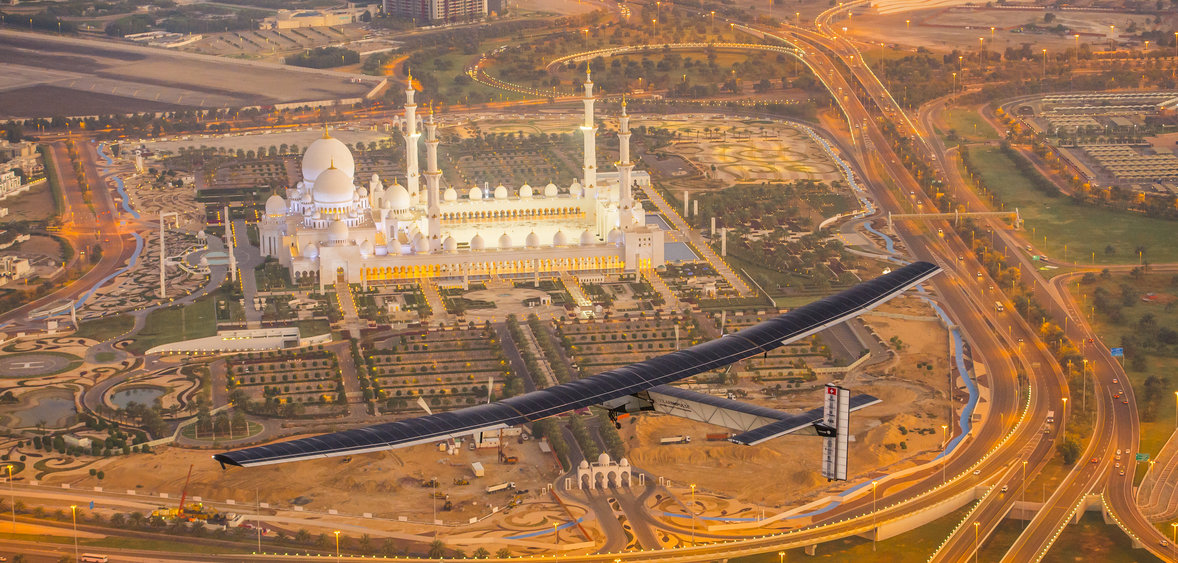This week saw the World Future Energy Summit kick off over in Abu Dhabi. The Middle East has been on the verge of greatness with regard to solar for years, and 2017 could see it step things up a notch. Suhail Al Mazroui, The United Arab Emirates energy minister, laid out plans for the country to reach 44% renewables capacity by 2050. Dubai looks set to be the busiest of the Emirates, having already broken ground on an 800 MW solar plant. Saudi Arabia revealed a new energy master plan, and Japanese company Miraikikai unveiled their waterless module-cleaning robot, which could prove a vital piece of technology for solar in desert regions.
The Zayed Future Energy Prize was also part of the celebrations in Abu Dhabi, with Sonnen scooping the US$1.5 million prize for small/medium enterprises. Middle East Solar Industry Association also held its award ceremony, honoring Array Technologies and Sterling & Wilson among others.
Meanwhile, annual statistics for 2016 have continued rolling in to the pv magazine office. China’s National Energy Administration claimed that country installed a massive 34 GW in 2016, almost doubling its solar capacity. Statistics from Japan’s Renewable Energy Institute show that solar provided 4.3% of the nations power last year. Perhaps the best statistic to sum up all of the others was PV Market Alliance’s announcement that 2016 was another record-breaking year for solar, with an estimated 75 GW installed worldiwde.
Of course, these statistics were accompanied by almost as many predictions for the year to come. Bloomberg New Energy Finance is predicting a ‘revolution in the power sector’ this year, thanks to worldwide falling prices for renewable energy. Market research firm Frost & Sullivan tell us that outlook is positive, with Asian Nations, particularly China and India expected to be in the driver’s seat for 2017.
Ukraine produced a couple of very interesting stories this week, announcing that it has received applications from 39 different organizations to develop its plan to turn part of the Chernobyl exclusion zone into an enormous 1 GW solar power plant. Ukraine’s solar industry is looking very healthy, with more than 54 projects in the pipeline and a chance for 2017 installation figures to surpass 1 GW.
There was mixed news for the rest of Europe, with figures from Solar Power Europe demonstrating a fall in production causing quite a stir. German manufacturer Astronergy though managed the difficult task of getting a license to import its products into Turkey. Also in Germany, state owned development bank KfW gave the green light to restart subsidy payments for installation of residential storage systems.
India’s seemingly insatiable apettite for solar carried on being fed this week. Although much of the country is apparently behind on its installation targets, Renew Power announced $390 million in new financing, and the country was able to announce its first utility scale storage project. Industry Analysts Mercom Capital also tell us that US$736 million was invested in India’s solar industry during Q4 2016.
This content is protected by copyright and may not be reused. If you want to cooperate with us and would like to reuse some of our content, please contact: editors@pv-magazine.com.




By submitting this form you agree to pv magazine using your data for the purposes of publishing your comment.
Your personal data will only be disclosed or otherwise transmitted to third parties for the purposes of spam filtering or if this is necessary for technical maintenance of the website. Any other transfer to third parties will not take place unless this is justified on the basis of applicable data protection regulations or if pv magazine is legally obliged to do so.
You may revoke this consent at any time with effect for the future, in which case your personal data will be deleted immediately. Otherwise, your data will be deleted if pv magazine has processed your request or the purpose of data storage is fulfilled.
Further information on data privacy can be found in our Data Protection Policy.